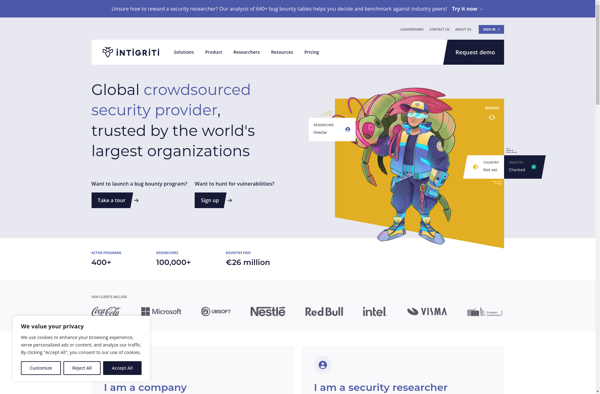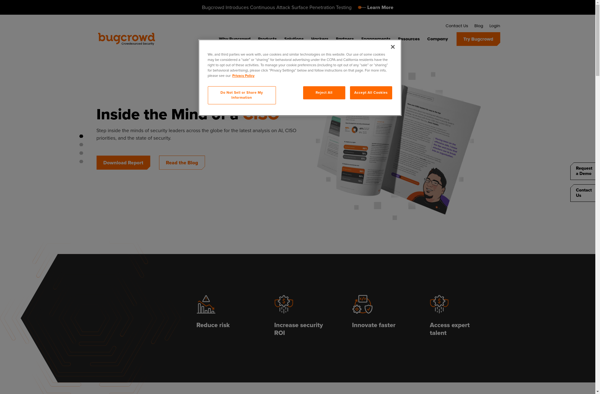Intigriti vs Bugcrowd
Struggling to choose between Intigriti and Bugcrowd? Both products offer unique advantages, making it a tough decision.
Intigriti is a Security & Privacy solution with tags like ethical-hacking, bug-bounty, vulnerability-disclosure.
It boasts features such as Bug bounty program management, Vulnerability disclosure program management, Vulnerability assessment and penetration testing, Crowdsourced security testing, Detailed reporting and analytics, Secure communication and coordination and pros including Connects businesses with a large pool of security researchers, Streamlines the bug bounty and vulnerability disclosure process, Provides comprehensive security testing and reporting, Offers a cost-effective alternative to traditional security services, Encourages responsible disclosure of vulnerabilities.
On the other hand, Bugcrowd is a Security & Privacy product tagged with crowdsourced-security, ethical-hacking, bug-bounty, vulnerability-management.
Its standout features include Crowdsourced security testing, Bug bounty programs, Vulnerability disclosure programs, Penetration testing, Attack surface monitoring, and it shines with pros like Access to large pool of ethical hackers, Cost effective compared to hiring full-time security team, Incentivizes hackers to find vulnerabilities, Flexible programs to fit different needs, Ongoing monitoring for new vulnerabilities.
To help you make an informed decision, we've compiled a comprehensive comparison of these two products, delving into their features, pros, cons, pricing, and more. Get ready to explore the nuances that set them apart and determine which one is the perfect fit for your requirements.

 Intigriti
Intigriti
Intigriti is an ethical hacking platform that connects businesses with security researchers to find vulnerabilities in their digital assets. Companies post bug bounties and researchers can earn rewards for responsibly disclosing issues.
Categories:
Intigriti Features
- Bug bounty program management
- Vulnerability disclosure program management
- Vulnerability assessment and penetration testing
- Crowdsourced security testing
- Detailed reporting and analytics
- Secure communication and coordination
Pricing
- Subscription-Based
Pros
Cons

 Bugcrowd
Bugcrowd
Bugcrowd is a crowdsourced cybersecurity platform that connects businesses with ethical hackers to find vulnerabilities and issues in websites, applications, devices, and infrastructure. It allows companies to tap into a global community of security researchers to improve their security posture.
Categories:
Bugcrowd Features
- Crowdsourced security testing
- Bug bounty programs
- Vulnerability disclosure programs
- Penetration testing
- Attack surface monitoring
Pricing
- Subscription-Based